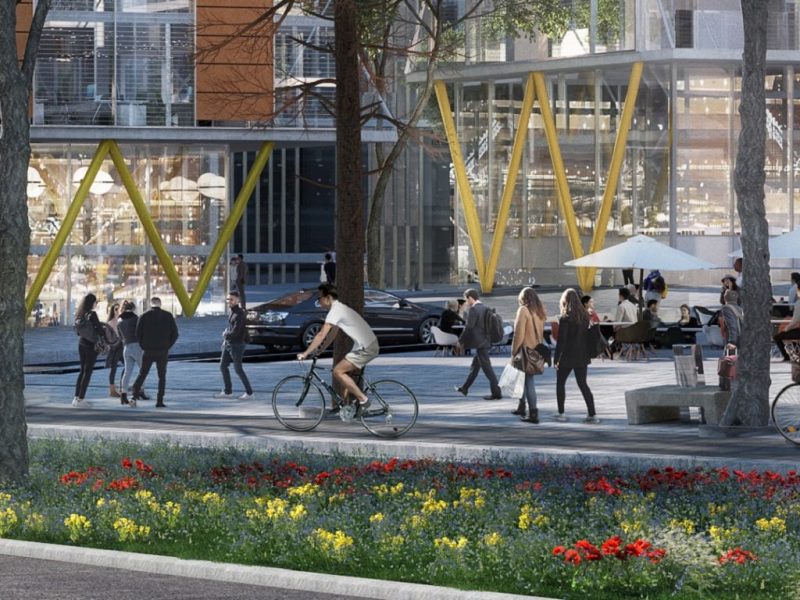18 January 2019
for Madrid Nuevo Norte


Madrid Nuevo Norte’s urban model facilitates and promotes the use of bicycles as a means of transport. To that end, an extensive 13-kilometre network has been designed, which will connect the project with adjacent neighbourhoods and the Green Cycling Belt. This urban model aims to reduce the trips made in private cars to 20%, compared to 80% by public transport and other sustainable means, including the bicycle as a real urban mobility alternative. The new cycling lanes will be interconnected to form a unique network that will connect, in turn, with the existing cycling infrastructures close to this area.
Thus, this new cycling network will link with the existing system of bicycle-friendly streets, detailed in the ‘Bike Map’ published by the Madrid City Council. To the east, it will connect with the axis formed by Mauricio Legendre Street and Llano Castellano and Nuestra Señora de Valverde avenues. To the west, it will link up with Castillo de Candanchu Street, which already has bike lanes, and to the south with Mateo Inurria Street and Asturias Avenue.
The new cycling network will also merge into the Green Cycling Belt at Isabel de Colbrand and Monasterio de Arlanza streets. The Green Belt, the city’s primary cycling infrastructure, will cross over the bridge that will be built over the rail yard at the extension of Santo Domingo de la Calzada Avenue.
The detailed design, size and technical solutions will be fully defined when the future urbanisation project is drafted. However, both the ad hoc modification of the General Plan, which defines the design and general layout of Madrid Nuevo Norte, and its detailed implementation plans, propose a basic planning scheme. The document was initially approved last September, and its final approval is expected in the coming weeks.
Account will be taken of the width recommended for cycling lanes by the Madrid City Council in its Public Road Guidelines, i.e. two metres for one-way lanes, and three meters for two-way lanes.
The Madrid Nuevo Norte project will run along the north-south axis. The Metro and commuter train lines, as well as the Bus Rapid Transit, will stretch across this axis, as will the main bike lanes.
Two bike lanes will run through Agustín de Foxá and Mauricio Legendre streets, shaping the direction of the cycling mobility flow in this project. This will provide continuity to the cycling lanes in all areas and encourage its use.
This dual north-south axis will stitch together and connect the remaining planned bike lanes that will interconnect the adjacent neighbourhoods along the east-west axis.
Madrid Nuevo Norte also envisages standalone bike lanes on pedestrian walkways along the Puente la Reina Street; on the bridge that will extend Cardenal Herrera Oria Avenue; on the bridge at the end of Llano Castellano Avenue over the M-30 ring road; and in Hiedra and Viejas streets.
The project also envisages a network of bicycle parks or bike racks, as well as BiciMad stations for the public bicycle sharing system. They will be scattered across Madrid Nuevo Norte so that they can be readily accessed on foot.
